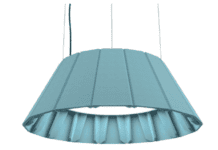
Daintree® Networked wireless lighting controls from GE Current, a Daintree company, are now a DesignLights Consortium® (DLC®) Qualified Networked Lighting Controls Product, giving building owners, facility managers, and lighting designers a tested and certified full-featured lighting controls option for commercial and industrial environments.
“The DLC provides an impartial assessment of the industry’s highest-performing products to boost consumer trust, so you know you’re getting the technology solutions that save the most energy,” says Tom Boyle, Chief Technology Officer for Current. “We’re pleased that Daintree® Networked Wireless Controls are now listed as a verified device for enabling connected buildings, which can help to meet energy- and carbon-reduction goals, as well as a potential for building optimization and functionality.”
Daintree® Networked provides the infrastructure for feature-rich control of LED lighting and connects with other building management systems such as HVAC, plug load control, fans, water heaters, air compressors, and refrigeration units. This gives building managers the ability to easily schedule, monitor, report and resolve energy performance issues using the Daintree Controls Software (DCS) web app.
The DLC is a nonprofit organization with a mission to improve energy efficiency, lighting quality and the human experience by enabling controllability. Among the consortium’s initiatives are three Qualified Products Lists (QPLs) for energy-efficient lighting technology: Solid-State Lighting, Horticulture Lighting, and Networked Lighting Controls.
Specifically, the DLC works to establish LED lighting and controls as the gateway to connected infrastructure, meaning smart buildings and smart cities that can lead the way to net-zero carbon emissions.



















![[VIDEO] Collect Asset Data at the Speed of Walking a Building](https://facilityexecutive.com/wp-content/uploads/2024/02/maxresdefault-324x160.jpg)